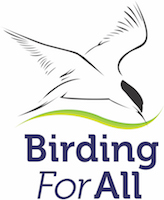GOB 89 – Nature Study
This article first appeared in Birdwatching Magazine April 2017
The question I see asked on local birding forums, more than any other, is ‘how do I get the kids interested in birding?’ Some may take to birding like ducks to dabbling, but most will reach their boredom threshold after about fifteen fidgeting minutes in a hide. The more they are encouraged to enthuse over the simple beauty of a rare brown blob doing nothing much, the more, depending on age, they are likely to pine for the X-box, snap-chatting their friends or excluding the real world by attaching ear-buds and focussing on a You-tube ‘epic fail’.
The wild world is not what it was in ‘our day’ whenever that was. Greybeards like me, at junior school in the 1950s remember a very different world. Don’t get me wrong, I’m not one of those who thinks the past was all rosy. I remember rationing and racism, polio and poverty, but there were some valuable practices that have all but disappeared. For example, I remember proudly putting a bird skull or pretty leaf on the school ‘nature table’, which was permanently in the front entrance, for us all to see and enjoy. I went looking for bird’s nests in the Easter holidays, not to rob them, but to marvel at them. Is there anything more perfect in the world than the ball of moss, sheep’s wool and gossamer of a Long-tailed Tits nest?
These days kids may be trailed round a city farm at best, or, at worst, rely on unnaturally vivid Disney-coloured cartoon worlds with nice fluffy talking animals and equally nasty animal villains to miseducate them about the natural world. When I ran youth projects in the 1980s and 1990s I knew kids who really believed that carrots grew in bunches and were shocked when they found out where milk came from… we dared not reveal the truth about the origin of eggs!
If our children and grandchildren are to fall in love with birding they must become fascinated by birds, and to do that they must see how they fit into nature and soar above it. There is only one way and I think that it is more or less constant exposure to the real countryside and daily doses of its wonders. Don’t expect them to enjoy seemingly pointless walks or try to stuff feathers down their reluctant throat too early… boredom is more likely to put them off for life. To be fair, I never went on ‘walks’ either. I spent my entire childhood in fields and woodlands, messing about on streams or building dens out of dead branches… everything I did had a point, albeit an esoteric age-related purpose.
Why not try taking them ‘geocaching’, my grandchildren love it… exposure to fields and fresh air wrapped up in mystery solving and the hunt for clues. With younger children, a walk in the country can turn into a challenging game if you set them ‘treasure’ like an acorn or a snail shell to find before their siblings.
The RSPB is taking the initiative with a brand-new schools’ programme with their ‘Big School’s Birdwatch’, but a few days a year will not hook them on nature forever. In Majorca, every schoolchild must visit the Albufera reserve every year, thus cementing the relationship between freedom from school discipline and enjoying wild things. But none of these are enough.
I say bring back the nature table. Moreover, sport isn’t the only way to get kids to exercise more, so put active ‘nature study’ firmly back on the junior school curriculum and don’t you forget to help them with their homework!
Hear the Podcast:





